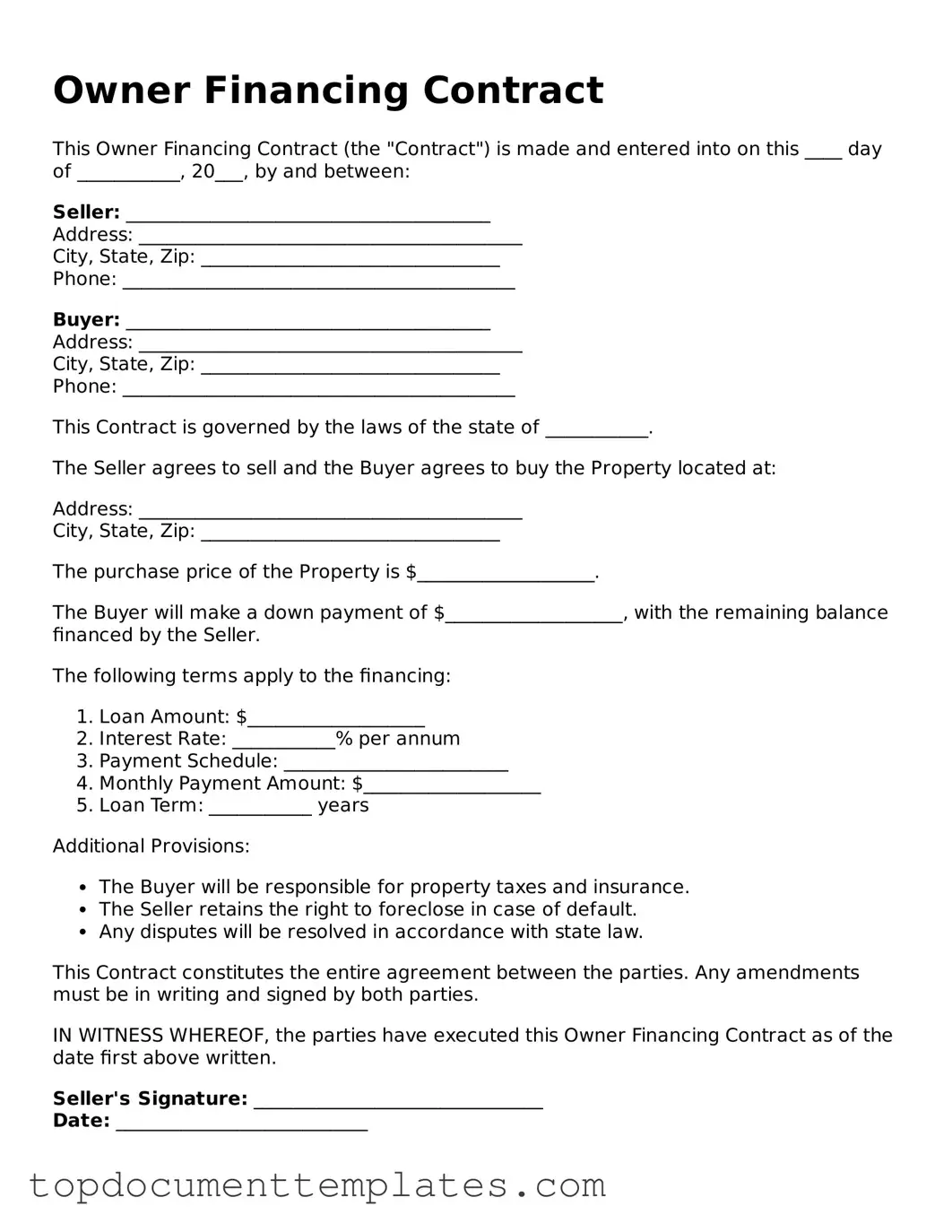Official Owner Financing Contract Template
An Owner Financing Contract is a legal agreement between a property seller and a buyer, allowing the buyer to pay for the property over time directly to the seller instead of through a bank. This type of arrangement can make homeownership more accessible for buyers who may not qualify for traditional financing. If you're considering this option, fill out the form by clicking the button below.
Open This Form
